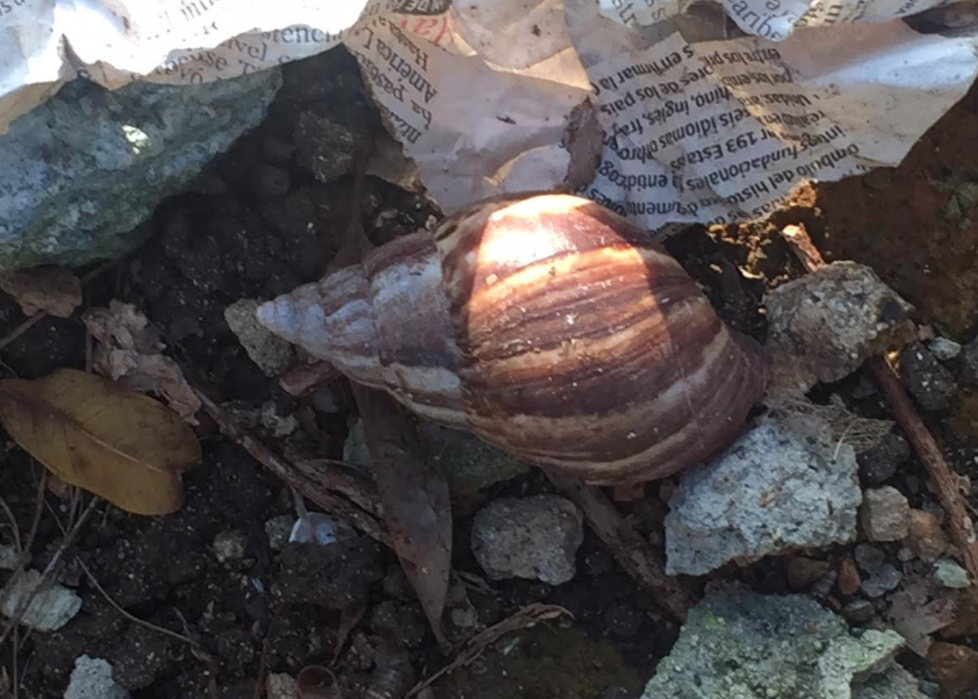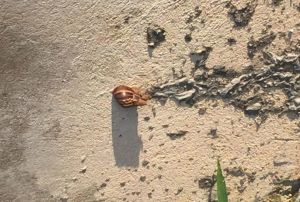We first reported on giant African snails (Lissachatina fulica) in Cuba in 2014 in the Havana municipality of Arroyo Naranjo, which was unknown to the island before that.

A more recent article published in the Spanish language news source, La Jornada (computer translated), thousand of the snails were reported in the Metropolitan Park of Havana.
On Thursday, Outbreak News Today was told by a source that “they are proliferating in the area of Miramar, in the vicinity of Calle 30th and Avenida 7″, in the area of the embassies about 10-12 km from Havana central.
The giant African snail is native to East Africa, especially in areas of Kenya and Tanzania, although it has spread to Asia and America.
How did they arrive in Cuba? Experts are not sure.
“We do not know the real causes of how he arrived in Cuba, but he was able to do it for cultural reasons, whether ornamental or religious, which motivated the entrance to the country,” said Dpa Michel Matamoros Torres, researcher at the Institute for Plant Health Research (INISAV). .
In the affected fields there are several theories, from a person who raised them as domestic animals and they escaped to the decorative element and the most widespread version: that they arrived at the island to use them in santeros rites of African origin.

“We can not say that religion has anything to do with the giant African snail, although we have some elements that make us think that they can be them, which is why we make an alert to the religious,” Matamoros said cautiously.
The International Union for the Conservation of Nature (IUCN) includes it in the list of the 100 most invasive harmful species in the world, in addition to considering it as the main vector in the world of Angiostrongylus cantonensis, which causes eosinophilic meningitis in humans.
This is a parasitic infection in rats where it matures. Mollusks like snails and slugs pick up Angiostrongylus larvae by ingesting them in rat feces.
Infection with this parasite occurs by accidentally or intentionally ingesting raw snails and slugs. Lettuce and other leafy vegetables may also be a source if contaminated by small mollusks. Eating raw or undercooked prawns and crabs that have ingested mollusks may also be a source of infection. For more infectious disease news and information, visit and “like” the Infectious Disease News Facebook page
Angiostrongylus cantonensis infection is usually asymptomatic or mildly symptomatic. Symptoms usually appear in 1-3 weeks. The most serious disease is eosinophilic meningitis. The symptoms can include headache, stiff neck, tingling or painful feelings in the skin, low-grade fever, nausea, and vomiting. Symptoms may last for weeks to months. The spinal fluid exhibits eosinophilia of over 20%. Deaths are rarely reported.
Prevention of this nematode is by not eating raw or undercooked snails or slugs, cook crabs and prawns to kill the larvae and thoroughly clean lettuce and other produce.
Related:
- Caribbean: Anguilla, Antigua and Barbuda, Bermuda, Cayman Islands, Montserrat, and Saint Kitts and Nevis eliminate mother-to-child transmission of HIV and syphilis
- Pre-cut watermelon, cantaloupe linked to Salmonella outbreak in Washington, Oregon
- Detroit: Hepatitis A cases investigated at McDonald’s, Greektown Casino
- Typhoid vaccine to be introduced in endemic countries: Gavi
- Philippines: Dengue vaccination program put on hold after new information



This is very bad news for Cuba. The GAS is a voracious eater, as anyone who’s lived in rural Hawaii knows. There was an outbreak in Florida caused by a kid who brought back a few pretty shells from Hawaii, not realizing there were living snails curled up inside. It took ten years and millions of dollars to eradicate that outbreak. It may be too late for Cuba, but they’ve got to make a big effort right now to eradicate this outbreak, otherwise it will be a disaster for Cuban agriculture and the environment. A lot of the investment is in manpower, and Cuba does have that.